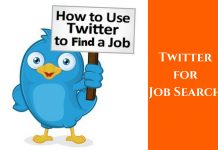There comes a time when you take out that old resume of yours from that long forgotten folder. You thump it to get off the dust that has built over it in the last decade or two. It is the resume that you’re going to use to get a C-Level job.
 If you’re like the other C-level executives that I’ve seen, I’d say the first thing you’d do after cleaning all that dust is adding your work history and achievements to that old nothing short of a relic resume, assuming it’d suffice.
If you’re like the other C-level executives that I’ve seen, I’d say the first thing you’d do after cleaning all that dust is adding your work history and achievements to that old nothing short of a relic resume, assuming it’d suffice.
Well, that sort of naivety is a bit fair on your end, because after all it is the 21st. But if you think that why I would care about a paper resume when I’ve a digital resume like that on LinkedIn, then you’d be completely at a loss.
Paper resume hasn’t gone completely dead yet. You may take it as a “job currency”, which will be required of you at any point in the hiring process. Unless you’ve that currency, you might not secure the position that you’ve seek so long.
So, if you’re looking for a C-level job, you may want to check out the following 5 killer executive resume tips.
C-Level Executive Resume Writing Tips:
1. Cut Down on the Real Estate:
As an executive level job candidate you must have a pretty long list of skills, career history, awards and achievements. Plus, you may intensely feel drawn to listing all the day-to-day duties or responsibilities, believing it’d make a solid impression on the recruiter.
Well, if you’ve keep dashing towards that path, you may probably not end up making the impression you desire. It is important to understand that it isn’t a mid-career level position you’re applying, but a management level job, which is why you don’t need to include such petty things in it and make the resume agonizingly long.
The ideal length of a senior level resume should be 1 to 2 pages. Instead of writing what tasks you did or didn’t, mention your role mandate, how much revenue/business you’ve generated or what sorts of actions you’ve taken to meet company’s goal. You may check resume samples on themuse, visual.ly or resumeshoppe to get a good look on how senior level CVs are written.
To maintain clarity throughout the resume, use bullets to list those details down.
2. Maintain Pulsating Personal Branding:
With the bad economy and the job market which is getting considerably intense, your personal branding is the only comrade that will help you walk off with a lucrative job.
Gone are the days when branding was taken as granted…but not anymore. Your personal branding reflects your passion towards your job, personal values, ethics and the attitude that resonate well with what prospective recruiters seek today.
It wouldn’t be wrong to believe that recruiters no longer look for executives that just sit all day long on their comfy chairs and order around stuff to employees down the hierarchy. They are looking for people who can fit in well, spruce up the organization’s culture and contribute to its mission and values.
3. Highlight Value Proposition:
You should know that you aren’t the only one with a finely-attractive resume for the big job. There are hundreds of other promising candidates that might be looking for the same job and even made to the recruiter’s desktop besides your resume.
What would help you get past this imminent hurdle, without tumbling? It is the value that you propose to put onto the recruiter’s table, and it is what that will help you stand out.
Highlight your value proposition embedded into your strengths. Or, you may also present the value by showing them what you’ve accomplished so far or how much you’ve brought into the organization you’ve worked with and how you’d like to propose the same or more to the company you’re applying to.
4. Retain Minimalism and Simplicity:
Let me remind you again that you aren’t applying for an early-level or mid-career level job, but for an executive position. That being said, you need to go easy on the creativity that might sprouts in your mind while designing the resume.
Unless you’re applying for the position of Art Director or Creative Head in any organization, resume isn’t the ideal place to show your creative flairs in designing. So, try your best to use a simple and minimalist format that mainly focuses on maintaining clarity.
However, if you are a bit picky about the resume presentation and light background color would quench your creative cravings.
5. Turn Cliché into Meaningful Statements:
Resume are fairly infamous for being overloaded with stale lines or phrases. It’s not just the mid-career level candidates who go happily with clichés assuming that’d impress the recruiters, but also the higher-level executives who often make the same blunders.
It is critical for job applicants, especially the C-level candidates, to tame their use of clichés and instead replace them with actionable and factual anecdotes or examples. For instance, instead of only mentioning, “Dedicated to bring profitable results”, you should be elucidating on it how much sales you’ve met, customers satisfied, generate leads, etc.
However, you need to be keep the description concise so you don’t end up writing a 3 to 4 pages long resume, which not just annoys the recruiters but also get thrown at the end of the pile.
Final Thoughts:
Executive level jobs are hard to come by and when they come, recruiters give their all to hiring only the best candidate to lead their team or company. You won’t get this, unless you try to put yourself in their shoes.
Try to learn more about the best practices or dos and don’ts of creating a management level resume before you start mass-forwarding your resume. Maintain clarity and highlight the key areas that’d help the recruiter to assess you more efficiently.
Also, make it highly easy for the recruiters to search you on the web or major search engines, because before checking your paper resume, they would be looking at your online portfolio first.











































